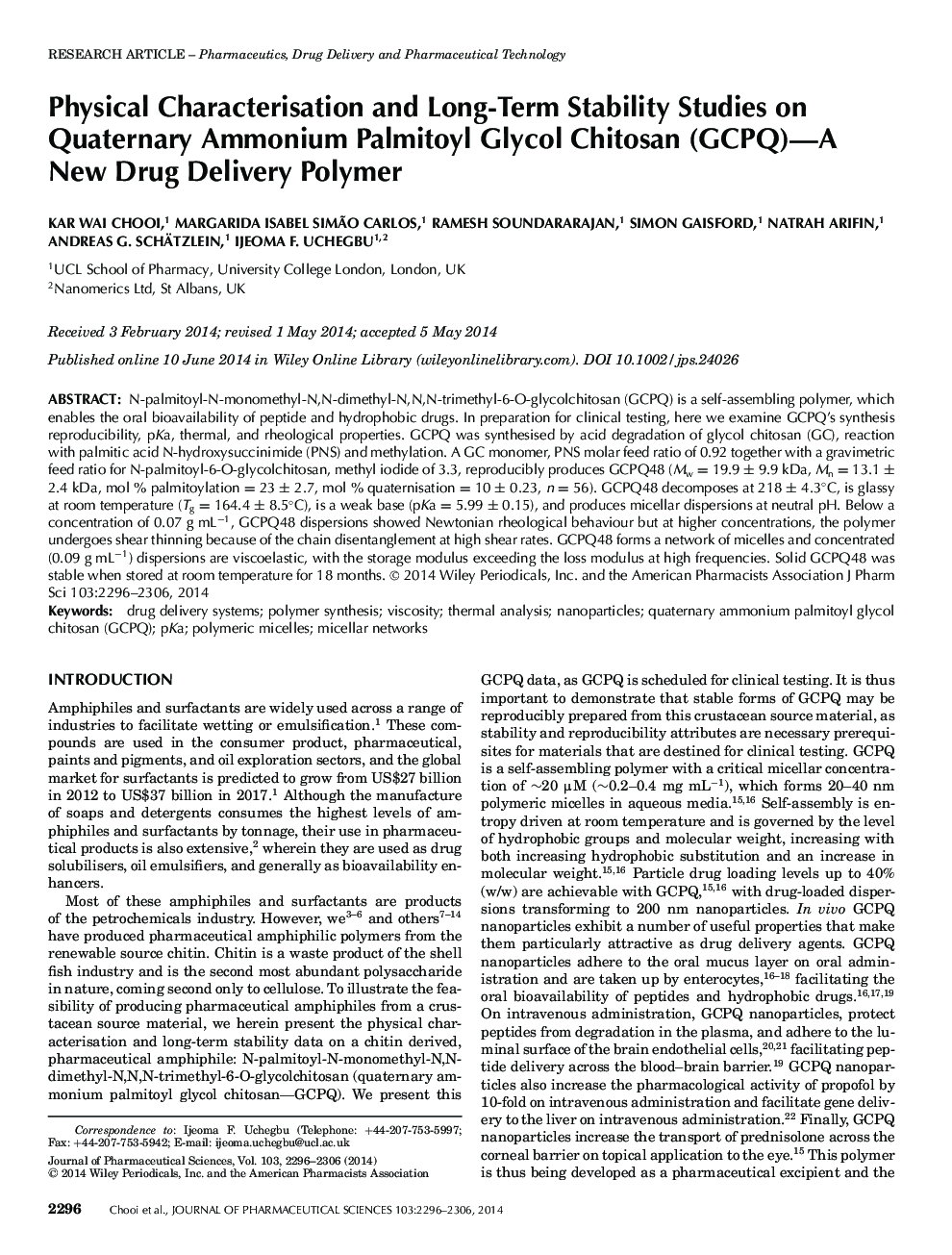| Article ID | Journal | Published Year | Pages | File Type |
|---|---|---|---|---|
| 10162293 | Journal of Pharmaceutical Sciences | 2014 | 11 Pages |
Abstract
N-palmitoyl-N-monomethyl-N,N-dimethyl-N,N,N-trimethyl-6-O-glycolchitosan (GCPQ) is a self-assembling polymer, which enables the oral bioavailability of peptide and hydrophobic drugs. In preparation for clinical testing, here we examine GCPQ's synthesis reproducibility, pKa, thermal, and rheological properties. GCPQ was synthesised by acid degradation of glycol chitosan (GC), reaction with palmitic acid N-hydroxysuccinimide (PNS) and methylation. A GC monomer, PNS molar feed ratio of 0.92 together with a gravimetric feed ratio for N-palmitoyl-6-O-glycolchitosan, methyl iodide of 3.3, reproducibly produces GCPQ48 (Mw = 19.9 ± 9.9 kDa, Mn = 13.1 ± 2.4 kDa, mol % palmitoylation = 23 ± 2.7, mol % quaternisation = 10 ± 0.23, n = 56). GCPQ48 decomposes at 218 ± 4.3°C, is glassy at room temperature (Tg = 164.4 ± 8.5°C), is a weak base (pKa = 5.99 ± 0.15), and produces micellar dispersions at neutral pH. Below a concentration of 0.07 g mLâ1, GCPQ48 dispersions showed Newtonian rheological behaviour but at higher concentrations, the polymer undergoes shear thinning because of the chain disentanglement at high shear rates. GCPQ48 forms a network of micelles and concentrated (0.09 g mLâ1) dispersions are viscoelastic, with the storage modulus exceeding the loss modulus at high frequencies. Solid GCPQ48 was stable when stored at room temperature for 18 months. © 2014 Wiley Periodicals, Inc. and the American Pharmacists Association J Pharm Sci 103:2296-2306, 2014
Keywords
Related Topics
Health Sciences
Pharmacology, Toxicology and Pharmaceutical Science
Drug Discovery
Authors
Kar Wai Chooi, Margarida Isabel Simão Carlos, Ramesh Soundararajan, Simon Gaisford, Natrah Arifin, Andreas G. Schätzlein, Ijeoma F. Uchegbu,
